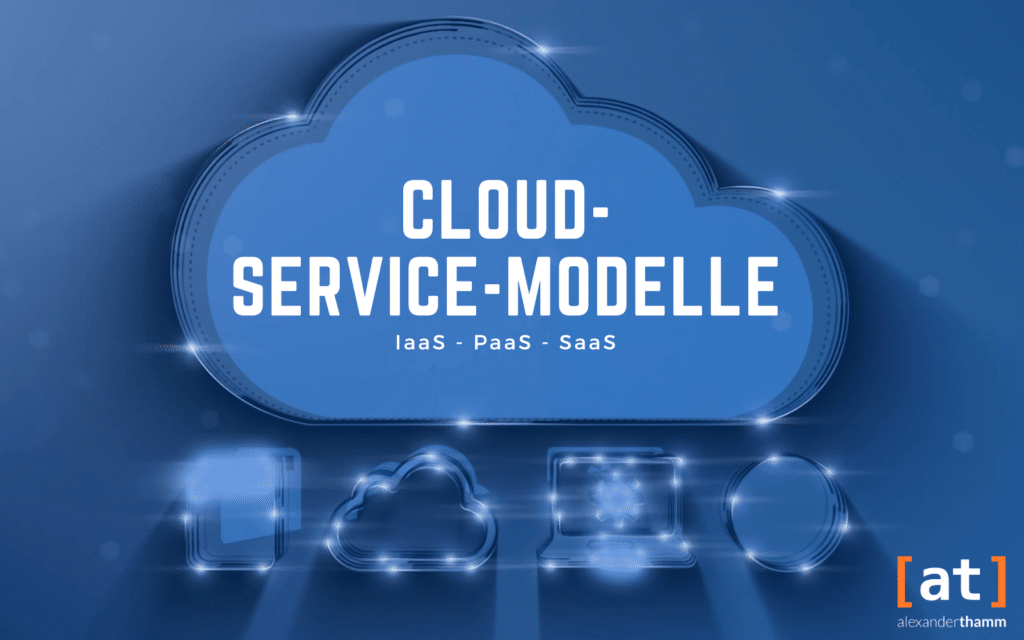The rapid development of information technology has presented companies with the challenge of developing efficient and future-orientated IT strategies. The development and implementation of a comprehensive cloud strategy plays a central role in this change. A strategic approach to cloud strategy is crucial to achieving long-term goals and fully utilising the potential of the cloud. The following text highlights the key aspects of cloud strategy and provides an insight into the possible implementation of a cloud strategy in companies.
Inhaltsverzeichnis
What is a cloud strategy?
A cloud strategy describes a systematic framework that defines how a company will integrate cloud technologies and services into its business processes in the future. It includes decisions on the Selection of cloud models, Service models and the Cloud migration from the existing Architecture and applications in the cloud. The starting point is the current business processes and the existing IT infrastructure.
The objective of the cloud strategy is generally to Maximise flexibility, scalability and efficiency. In addition to the option for companies to migrate business processes to the cloud, companies can also consider migrating to the cloud as part of their cloud strategy. Cloud computing to get out of the car and On-premises infrastructure or change the current cloud provider.

Discover how cloud migration transforms your business, maximises benefits and minimises risks - your guide to a more efficient organisation:
What is a cloud-first strategy?
The cloud-first strategy is a specific approach within the cloud strategy that states that Cloud resources the preferred option for all IT initiatives and investments and establishes the cloud as the standard. This means that for every new application or infrastructure revision, it is first checked whether implementation in the cloud is possible and sensible and then implemented.
The aim is to utilise the advantages of the cloud, such as Cost reduction and scalabilityto make optimum use of it. The cloud-first approach should not be confused with a cloud-only strategy. A cloud-only strategy, on the other hand, aims to operate all technologies and services in the cloud, whereas in a cloud-first strategy, the cloud is merely intended to serve as a new standard, while existing solutions that have been implemented to date can still be operated on-premises, for example.

Our article compares cloud computing and on-premises solutions for companies, highlighting aspects such as control, security, costs and flexibility of these technologies.
What is a cloud exit strategy?
A cloud exit strategy regulates the targeted exit as well as the process and measures that a company takes when it decides to do so, get out of the cloud or Switch from one cloud provider to another. When developing the strategy, particular attention should be paid to aspects such as data portability, minimising downtimes, Safety aspects and the contract design with the current cloud provider.
Reasons for the need to implement a cloud exit strategy can include, in addition to active decisions by a company, for example Cost or safety aspects external influences such as contract cancellation, insolvency or unavailability of the cloud provider. The cloud exit strategy is therefore a crucial and important component of any cloud strategy, which should be regularly reassessed and updated.

In our blog post, we explain the essential aspects of cloud security and data protection to keep your company safe in the digital cloud.
How is a cloud strategy implemented?
The implementation of a cloud strategy requires a methodical and structured approach in its implementation. The following list of a possible cloud strategy can serve as a guide, whereby the specific requirements and objectives of the company must be taken into account and included in the decision-making process.
- Target definitionThe first step should be to define as concrete and detailed a target formulation as possible regarding the use of cloud computing. As this step can be seen as the basis for the subsequent activities, it is of particular importance in the context of the cloud strategy.
- Identify risks and pain pointsIn addition to concretising positive aspects and goals, it is also important to identify the risks of implementing the cloud strategy in order to exploit possible potential and counteract risks.
- Location/actual analysisTo better assess the necessity and benefits of implementing a cloud strategy, the current state of the company's IT resources and financial situation should be analysed and evaluated.
- Cost calculationIn this step, the expected costs should be determined and the planned amortisation period calculated. In the course of a cloud exit, cost comparisons with other cloud providers can be made here or options for exiting the cloud can be evaluated financially.
- Safety aspectsEvery company is subject to specific governance and compliance guidelines, which must be in line with the cloud strategy.
- Choice of cloud model and service model: The choice of the respective cloud model or service model should be clarified as part of the technical implementation. Depending on the specific requirements of the company, there are various options among the common cloud models of the Public cloud, the private cloud or the Hybrid Cloud specific advantages and disadvantages. While public clouds impress with their simple scalability, private clouds may be more suitable in terms of data protection regulations. Hybrid clouds are a hybrid of both cloud models. In addition to the choice of model, the choice of service procurement is also an important decision. For example Infrastructure-as-a-Service (IaaS) the entire IT infrastructure is provided by the cloud provider, while in the case of Platform-as-a-Service (PaaS) the provider offers a development environment for the company. With Software as a Service (SaaS) applications and services are offered via the Internet for which no local installation is required.
- Detailed planning and implementationOnce all the technical framework conditions have been clarified, the next step is to concretise when/how/which steps should be taken to pursue the cloud strategy as part of the detailed planning. In addition to scheduling, this includes the selection of internal or external partners for implementation and the choice of approach for a migration or exit strategy. If the current infrastructure is simply relocated in a "lift and shift" approach, refactoring involves a complete reorganisation of the infrastructure. The migration of applications and data to the cloud should take place gradually in order to minimise operational interruptions. Implementing security measures and ensuring compliance are critical aspects of this. Training for IT staff and all employees involved and continuous monitoring of performance is crucial to ensure a smooth integration.
- Regular overplanningIn the course of a long-term and systematic alignment of the cloud strategy, it is essential to validate the cloud strategy pursued to date to ensure that it is up to date and makes sense. This applies to both a cloud-first strategy and a cloud exit strategy. Changing framework conditions can result in favourable adjustment potential in the cloud strategy.

In our article on cloud service models, we inform you about the differences between the three different services - Infrastructure-as-a-Service (IaaS), Platform-as-a-Service (PaaS) and Software-as-a-Service (SaaS) - and the benefits for your company.
Why should companies take a strategic approach?
The decision to implement a comprehensive and long-term cloud strategy is of great importance for companies, as this strategic approach numerous advantages, but also challenges can offer:
- Efficiency increaseCareful selection of cloud services and optimised configuration of the infrastructure can reduce costs and increase performance at the same time.
- Data availability and security: The selection of suitable Security measures and the implementation of best practices ensure the protection of sensitive information. In addition, a smart strategy enables the implementation of redundancy mechanisms to minimise downtime and ensure the continuous availability of data. Nevertheless, potential security concerns about data sovereignty and compliance issues should also be clarified as part of this.
- Process optimisation and digitalisationThe strategic use of cloud technologies offers the opportunity for comprehensive process optimisation. The cloud enables the integration of applications and services, which leads to more efficient processes. Companies can reorganise and adapt their business processes to meet changing market requirements.
- Agility and scalabilityA well thought-out cloud strategy enables companies to easily scale their infrastructure. This is crucial for organisations facing the challenges of a rapidly changing business environment. The cloud offers the flexibility to expand or reduce resources as needed without making long-term commitments.











0 Kommentare